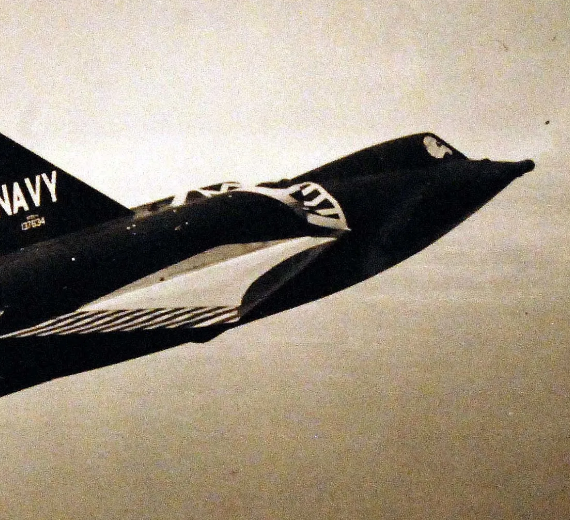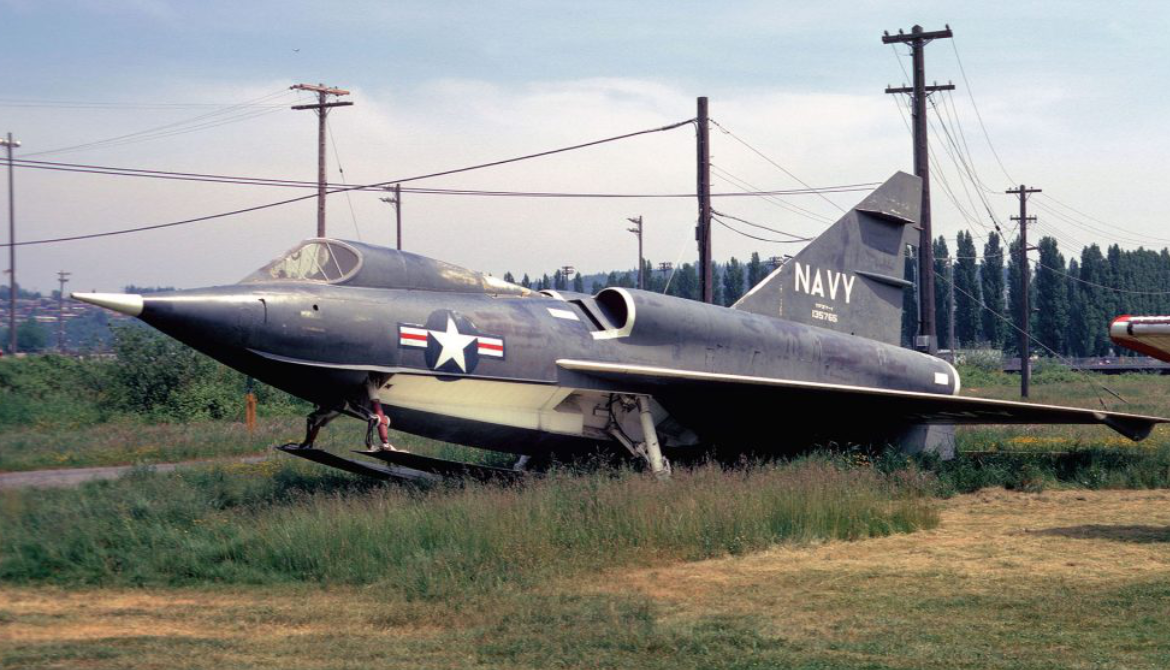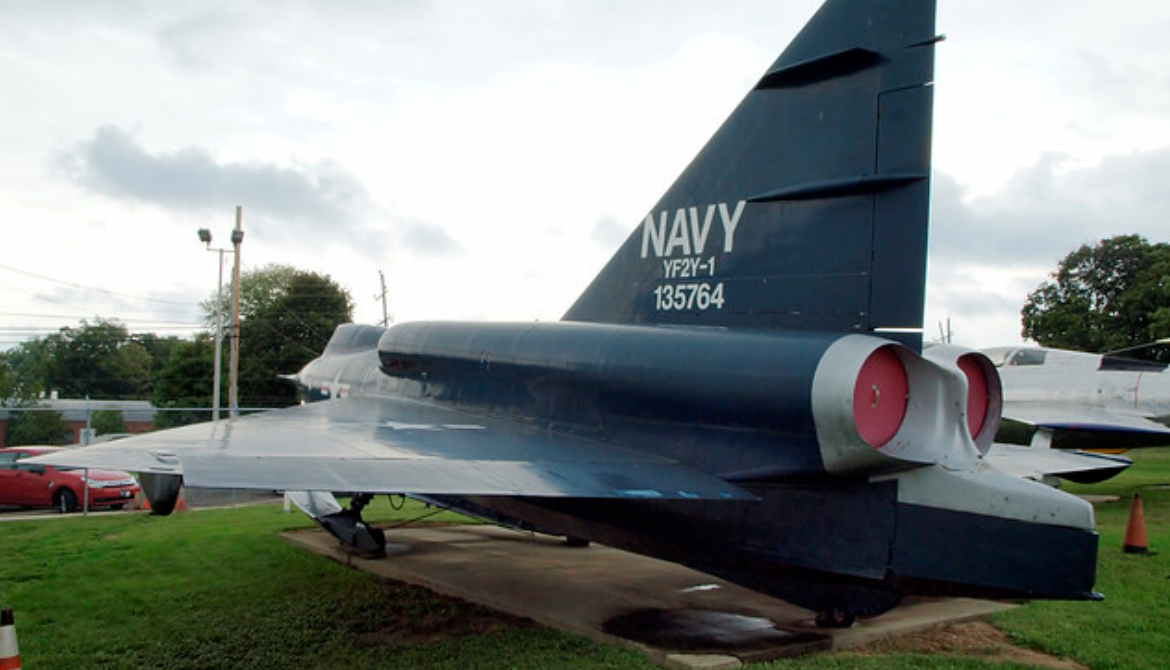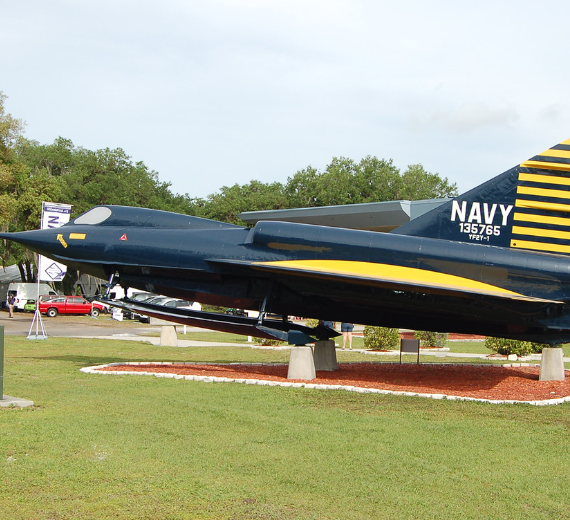Consolidated / Convair
Convair F2Y Sea Dart
Role Seaplane fighter
National origin United States
Manufacturer Convair
First flight 14 January 1953
Retired 1957
Primary user United States Navy
Number built 5
.
History Consolidated / Convair
Convair F2Y Sea Dart

The Convair F2Y Sea Dart was an American seaplane fighter aircraft that rode on twin hydro-skis during takeoff and landing. It flew only as a prototype, and never entered mass production. It is the only seaplane to have exceeded the speed of sound.
Development
The aircraft was to be a delta-winged fighter with a watertight hull and twin retractable hydro-skis for takeoff and landing. When stationary or moving slowly in the water, the Sea Dart floated with the trailing edge of the wings touching the water. The skis were not extended until the aircraft reached about 10 miles (16 km) per hour during its takeoff run.
The required power was supplied by a pair of afterburning Westinghouse XJ46-WE-02 turbojets, fed from intakes mounted high above the wings to avoid ingesting spray. When these engines were not ready for the prototypes, twin Westinghouse J34-WE-32 engines of just over half the power were installed.[
Design
 |
|
| An F2Y Sea Dart with dual-ski configuration | |
| fighter aircraft that rode on twin hydro-skis during takeoff and landing. It flew only as a prototype, and never entered mass production. It is the only seaplane to have exceeded the speed of sound. | |
|---|---|
It was created in the 1950s, to overcome the problems with supersonic planes taking off and landing on aircraft carriers. The program was canceled after a series of unsatisfactory results and a tragic accident on 4 November 1954, in which test pilot Charles E. Richbourg was killed when the Sea Dart he was piloting disintegrated in midair. The four surviving planes were retired in 1957, but some were kept in reserve until 1962.
0
KmCeiling
0
KmCombat RANGE
0
Km/hAircraft Speed
0
Max Crew
Photo Gallery
Consolidated / Convair / Vultee
Convair F2Y Sea Dart


Consolidated Convair Vultee
Convair F2Y Sea Dart
General characteristics
- Crew: 1
- Length: 51 ft 1.5 in (15.583 m)
- Wingspan: 35 ft 4 in (10.77 m)
- Width: 5 ft 5 in (1.65 m) fuselage
- Draught (skis retracted): 40 in
- Draught (skis extended): 96.5 in
- Height: 16 ft (4.9 m) on 3-point beaching gear
-
- 7 ft 5 in (2.26 m) aircraft in horizontal rigging position
- Wing area: 568 sq ft (52.8 m2)
Powerplant
- Empty weight: (7,586 kg)
- Gross weight: (11,055 kg)
- Fuel capacity: 1,000 US gal (830 imp gal; 3,800 L) usable fuel + 6.5 US gal (5.4 imp gal; 25 L) unusable fuel
- Powerplant: 2 × Westinghouse J46-WE-12B afterburning turbojet engines, 4,500 lbf (20 kN) thrust each dry, 6,100 lbf (27 kN) with afterburner
-
- XF2Y-1 137634 2x Westinghouse J34-WE-32 3,400 lbf (15,000 N) (dry only)
Specifications
- Maximum speed: 695 mph (1,118 km/h, 604 kn) at 8,000 ft (2,400 m)
-
- 825 mph (717 kn; 1,328 km/h) at 36,000 ft (11,000 m)
- Maximum speed: Mach 1.25
- Range: 513 mi (826 km, 446 nmi)
- Rate of climb: 17,100 ft/min
- Time to altitude: (11,000 m) in 1 minute 42 seconds
- Wing loading: 29 lb/sq ft (140 kg/m2)
- Thrust/weight: 0.56 (max. loaded)
- Take-off run: (1,700 m)
Armament
- Guns: 4x fixed forward-firing 20 mm (0.787 in) Colt Mk 12 cannon (production aircraft)
- Rockets: Fin-Folding Aerial Rockets (production aircraft)
- Missiles: 2 × air-to-air missiles (production aircraft)
.
Links to Youtube & Others
The "Camel" may be regarded as the prototype of the Consolidated response to the USAAS's 1924 requirement for a new primary trainer. In the early summer of 1924.
Convair F2Y Sea Dart
In 1922, the Army ordered three TA-3 (Trainer, Air-cooled, Type 3) machines for evaluation with the Le Rhone engine and dual controls.
Youtube Link
The Consolidated PT-1 Trusty (company designation Model 1) was a biplane primary trainer used by the United States Army Air Service (USAAS)












